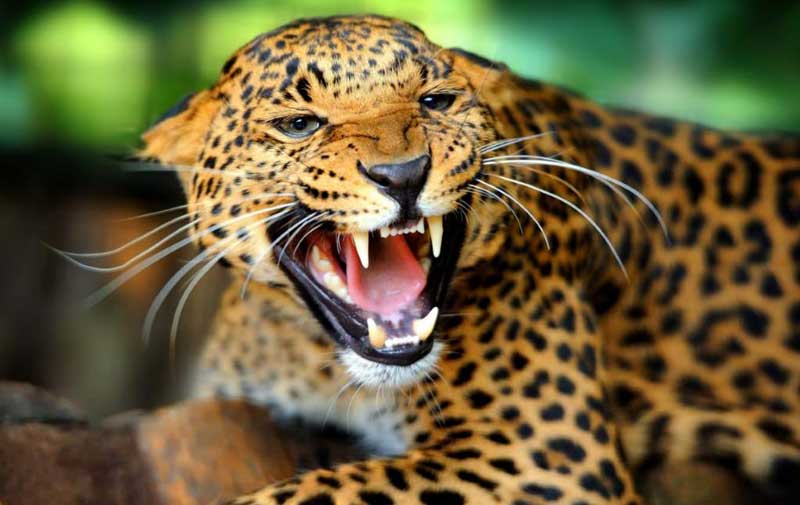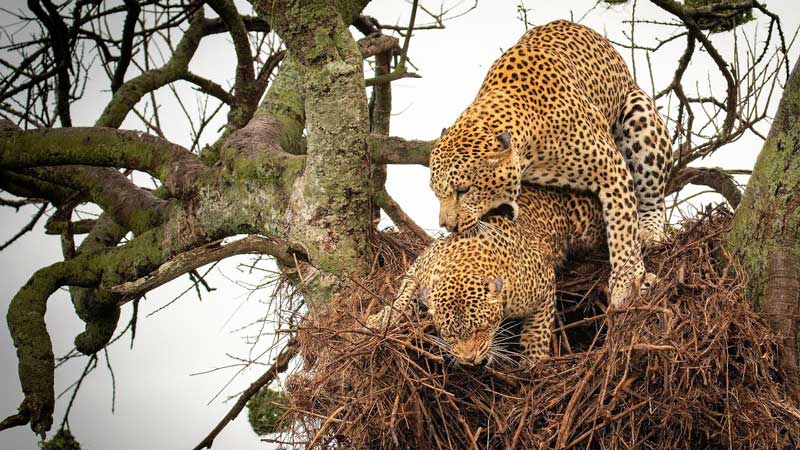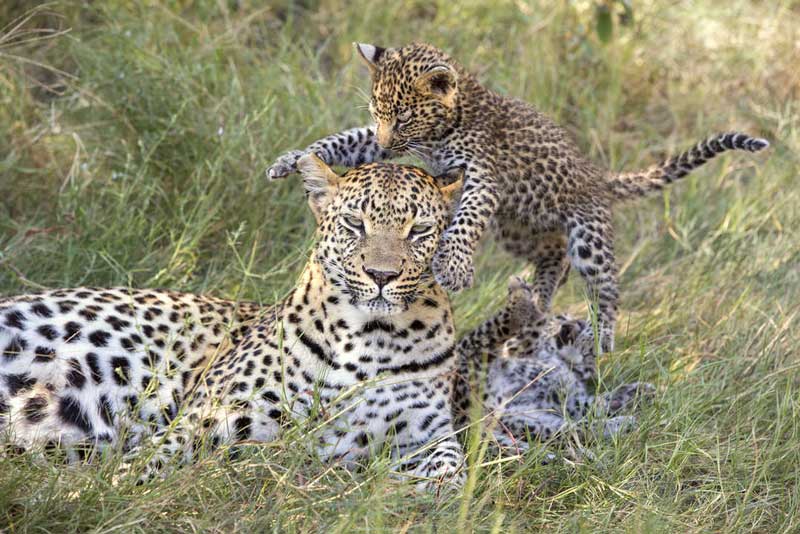
Leopards are powerful big cats, belonging to the Panthera genus, like the tiger, lion, Jaguar and snow leopard. Although today its populations are fragmented and declining and it had lost up to 75% of its former range, in 1750, its geographic range spanned nearly the whole of the south of Sahara, including parts of north and northeast Africa and extended from Western Asia to China and India. It is still abundant in certain marginal habitats in sub-Saharan Africa, from where the other large cats have disappeared.
While its populations on the Arabian Peninsula are small and fragmented, it is relatively abundant in the Indian subcontinent, especially in the Shivalik Hills, Gangetic plains, Central India, the Eastern and the Western Ghats, the hills in Northeast India and the basin of the River Brahmaputra. In general, the leopard prefers and inhabits mostly in savannah, rainforest, grasslands, deserts or even swamps, while some like to live high up in the mountains. In fact, the leopard is a very adaptable species and lives in more places than any other large cat.

Although the leopards are large animals, they are the smallest of the big cats with males larger and heavier than females. However, their sizes vary geographically and with a muscular body, relatively short limbs and a broad head, the head-and-body length of the males are generally between 6.5 to 7 feet, excluding a 3 to 3.5 feet long tail and stand 2 to 2.6 feet at the shoulder, weighing 50 to 90 kg. Their thick and soft fur, notably softer on the belly than on the back, with typically yellowish ground colour above and white below, varies between individuals from pale yellowish to dark golden with dark grouped spots, known as rosettes, as they resemble the shape of a rose.
The colour of the spots fades toward the white underbelly and the insides and lower parts of their legs, but these patterns help to camouflage their bodies as they move through the grass and trees. Although in colder climatesthe fur of the leopard tends to be greyish in colour, for the habitats in the rainforest it exhibits a dark golden hue. However,the pattern of the rosettes is unique in each individual. But due to the densely arranged black rosettes, the woolly fur of the young leopards appears to be dark coloured.

Black leopards are actually melanistic leopards. But as they appear to be completely black in colour and their spots are hard to distinguish, they are commonly called Black Panthers. The Black Panther is common mainly in tropical and subtropical forests and interbreeding in melanistic leopards produces a significantly smaller litter size than is produced by normal pairings. However, between 1905 and 1967, nine pale and white leopards were reported in India and leopards with reddish pigmentation were recorded between 1990 and 2015 in Madikwe Game Reserve in South Africa. But the reason behind this polymorphism, known as ‘Pink Panther’ is really not known.

Unlike lions, leopards are solitary animals and the adults associate only during the mating season. But like all the other big cats, they are territorial creatures and the males defend their territory by roaring and scent marking, while females use their roar to attract mates and call their cubs. Their vocalizations include growls, snarls, meows and purrs and their roaring sequences consist mainly of grunts, a rough rasp that sounds like a handsaw cutting wood.
They are mainly nocturnal, active mainly from dusk till dawn and rest for most of the day, sometimes basking in the sun. Like the other big cats, leopards are also carnivorous and they eat anything from rodents, snakes, porcupines, large birds, monkeys, baboons to medium-sized antelopes and deer. Leopards are ambush predators that kill their prey by stealth. They stoop and bend low to creep and sneak up to the victim and pounce before the victim has a chance to react, kill its prey with one swift bite to the neck, breaking it. They are agile animals, can run at more than 58 km per hour, leap over 20 feet horizontally, jump up to around 10 feet vertically and are excellent climbers and use their long tails to help them keep balance when they are high in the trees. Even, sometimes they drag their prey into trees to keep it safe from being stolen by other animals.

The leopards become sexually mature around the age of two. They do not have any specific breeding season and they mate all year round. While the estrus cycle of the female is about 46 days, they are most receptive to mating for nearly a week. The leopards are not monogamous and the females may mate with multiple partners. Strangely, instead of the male, courtship is initiated by the female, when she wasps, moving back and forth in front of the male, rubs her head and flank against him, twitching her tail. During the mating, the male mounts female, often biting her nape and both continually growl during copulation. However, conception often requires multiple courtships and the consequent copulations.

After the end of the gestation period of around three months, cubs are born in a litter of two to four cubs in a cave, crevice among boulders, hollow tree or thicket. Cubs born with closed eyes, which open four to nine days after birth, weighing around 500 grams and almost hairless, completely dependent on their mother for food and stay with her in the den until they are 3 months old. Until they are old enough to begin playing, the mother hides her cubs and moves them from one safe location to the next. The young begin to follow the mother on hunts around three months of age and remain with the mother till they are around two years old, when they become sexually mature. The life expectancy of leopards is around 17 years of age in the wild and up to 23 years in captivity.